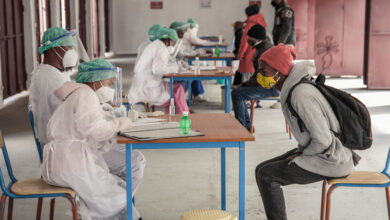Zimbabwe
WFP Plans A Food Relief Programme Targeting 700,000 Needy Zimbabweans

The United Nations World Food Programme (WFP) is planning to begin a food relief programme in Zimbabwe targeting 700,000 people who are affected by a poor harvest and the Ukraine war, an official said, reported The Reuters.
The WFP told Reuters on Tuesday that Zimbabwe’s government is working with humanitarian agencies to provide food aid for 3.8 million people.
Zimbabwe has been struggling to feed its people since 2000, when former leader Robert Mugabe supported the seizure of white-owned farms to resettle landless Black people.
Notably, about half of the country’s main crop, maize, is expected to fail because of a lack of rain during the recent growing season. Last year, Zimbabwe had a record maize crop weighing 2.72 million tonnes, but the country expects to only produce 1.56 million tonnes in 2022 due to poor rainfall. The southern African country requires 2.2 million tonnes of maize annually for human and livestock consumption.
WFP said it had set aside $40 million for the food aid programme to provide food aid to millions over the peak of the hunger season from October, when poor households run out of food stocks, to March, when harvesting starts.
WFP country representative Franscesca Erldelmann told Reuters that she doesn’t believe the food shortage in Zimbabwe has yet reached the level to be considered a famine. However, about 3.8 million people are food insecure in the country.
Erldelmann said more Zimbabweans could feel the pain of hunger with diminishing food supplies. She said the number of food insecure people had increased from 2.9 million to 3.8 million, warning that more households could go hungry as grain stocks dwindle.
Notably, rising food prices as well as higher fuel costs due to Russia’s invasion of Ukraine, have driven Zimbabwe’s inflation from 61% in January to 285% in August, undermining President Emmerson Mnangagwa’s efforts to revive the country’s economy.





